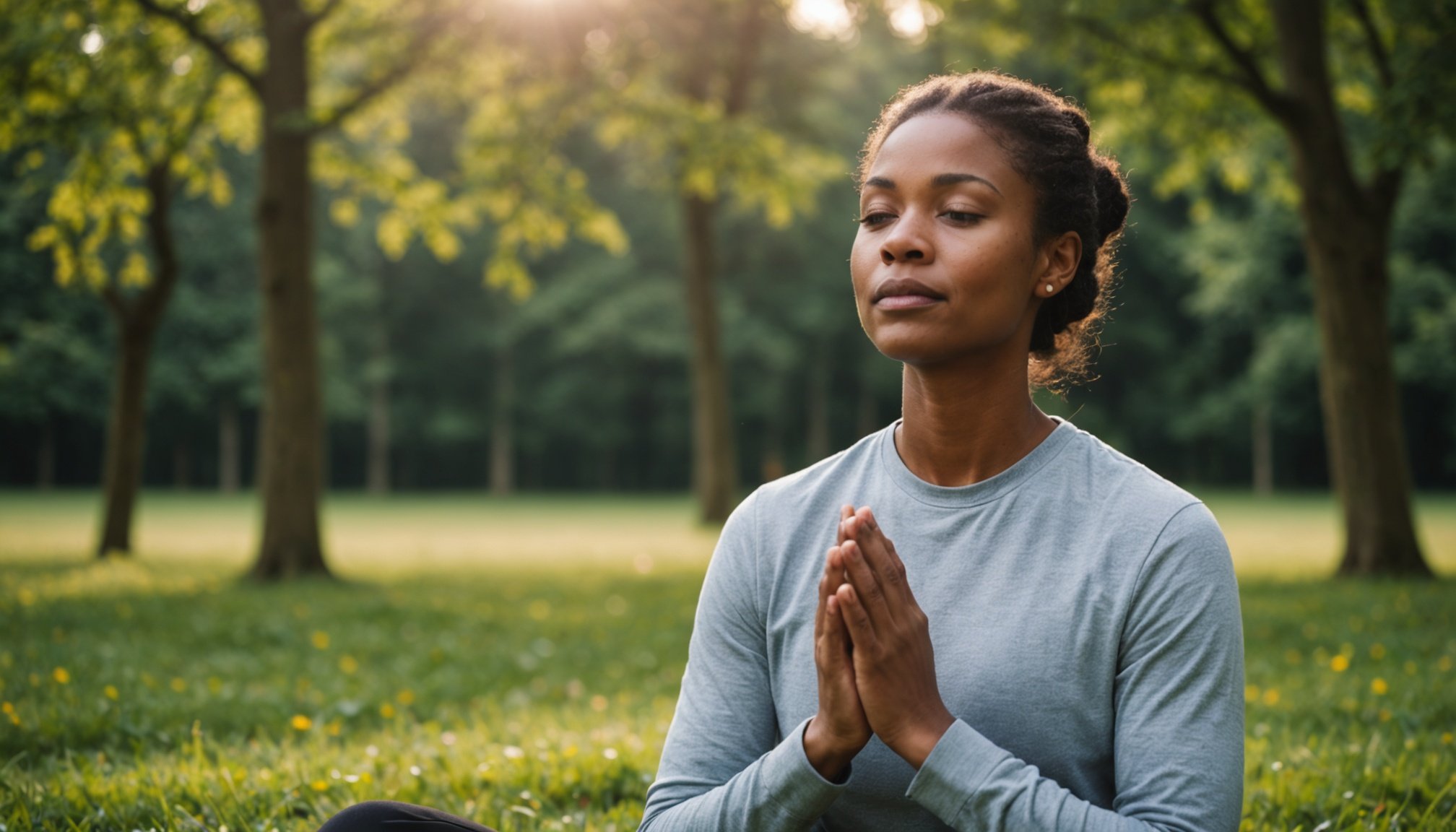Mastering Stress Relief: A UK Resident’s Guide to Mindful Breathing Techniques
In today’s fast-paced world, managing stress has become an essential skill for maintaining both mental and physical health. For UK residents looking to alleviate stress and enhance their overall well-being, mindful breathing techniques offer a powerful and accessible solution. This guide will delve into the world of mindfulness, meditation, and breathing techniques, providing you with the tools and knowledge to integrate these practices into your daily life.
Understanding Mindfulness and Meditation
Before we dive into the specifics of breathing techniques, it’s crucial to understand the broader context of mindfulness and meditation. Mindfulness is the practice of being fully present and engaged in the current moment, while meditation is a specific technique used to cultivate this awareness.
In the same genre : Top Tips for UK Pet Owners: Keeping Your Cat Healthy and at the Perfect Weight
As Jon Kabat-Zinn, a renowned expert in mindfulness, explains in his book “Wherever You Go, There You Are,” mindfulness is about “paying attention in a particular way: on purpose, in the present moment, and nonjudgmentally.”[2]
Mindfulness meditation, in particular, involves focusing your attention on your breath, body, or other aspects of your experience, and gently bringing your mind back when it wanders. This practice has been scientifically proven to reduce stress, anxiety, and negative emotions, while also improving mental clarity and overall health[2][3].
This might interest you : Empowering UK Residents Over 50: Mastering Strength Training at Home Without Gym Gear
Setting Up Your Meditation Practice
To start practicing mindful breathing, you need to create a conducive environment and adopt a comfortable posture.
Finding the Right Space
Identify a quiet, calm space where you can sit without distractions. This could be a corner in your home, a local park, or even a dedicated meditation room.
Choosing Your Posture
You can meditate in various postures, but the most common is sitting. Here’s how to set up your seated meditation:
- Sit Comfortably: Choose a chair or sit on the floor with your legs crossed. Ensure your back is straight and your body is stable.
- Position Your Hands: Let your hands drop onto your legs, keeping your upper arms at your sides.
- Adjust Your Gaze: Drop your chin slightly and let your gaze fall gently downward. You can keep your eyes open or closed, depending on what feels more comfortable for you[3][5].
Effective Breathing Techniques for Stress Relief
Breathing is the cornerstone of mindfulness meditation, and mastering various breathing techniques can significantly enhance your practice.
Basic Breathing Meditation
Here’s a step-by-step guide to a basic breathing meditation:
- Take a Seat: Find a comfortable and quiet spot to sit.
- Set a Time Limit: Start with short sessions, such as 5-10 minutes.
- Notice Your Body: Ensure you are stable and comfortable.
- Feel Your Breath: Focus on the sensation of your breath as it goes in and out. Notice where you feel your breath most—perhaps in your belly or nose.
- Notice When Your Mind Wanders: Gently bring your attention back to your breath without judging yourself.
- Close with Kindness: When you’re ready, open your eyes, notice your surroundings, and take a moment to reflect on how you feel[3].
5-Minute Breathing Meditation
This quick practice is designed to reduce stress and anxiety:
- Get Comfortable: Sit or lie down in a relaxed position.
- Focus on Your Breath: Take a deep inhale, expanding your belly, and then exhale slowly, elongating the out-breath as your belly contracts.
- Follow Your Breath: Keep your attention on your inhale and exhale for two minutes.
- Return to Your Breath: Whenever your mind wanders, gently bring it back to your breath without judgment[5].
Walking Meditation
For those who find sitting challenging or prefer movement, walking meditation is an excellent alternative:
- Walk Naturally: Start walking at a natural pace.
- Pay Attention to Your Steps: Notice the lifting and falling of your foot, the movement in your legs, and any shifting in your body.
- Maintain Awareness: If your mind wanders, guide it back to the sensation of walking. If you’re outdoors, maintain a larger sense of your environment[3].
Benefits of Mindful Breathing Techniques
Integrating mindful breathing techniques into your daily life can have numerous benefits for your health and well-being.
Reducing Stress and Anxiety
Mindfulness meditation has been shown to reduce the production of stress hormones like cortisol, leading to a decrease in anxiety and stress levels. As Kabat-Zinn notes, “Stress is the enemy of willpower,” and mindfulness practices can help mitigate this effect[2].
Improving Mental Health
Regular mindfulness practice can enhance mental clarity, improve mood, and reduce symptoms of depression. By focusing on the present moment, you can better manage thoughts and feelings that might otherwise overwhelm you[2][5].
Enhancing Physical Health
Mindfulness practices, including breathing techniques, can lower blood pressure, improve sleep quality, and boost the immune system. These physical benefits are a direct result of the reduced stress and increased relaxation achieved through mindfulness[2][3].
Practical Tips for Incorporating Mindfulness into Your Life
Here are some practical tips to help you incorporate mindfulness and breathing techniques into your daily routine:
- Start Small: Begin with short meditation sessions and gradually increase the duration as you become more comfortable with the practice.
- Make It a Habit: Incorporate mindfulness into your daily routine, such as right after waking up or before bed.
- Use Reminders: Set reminders or use apps that guide you through meditation and breathing exercises.
- Combine with Other Activities: Merge mindfulness with other activities like yoga, walking, or even eating to make the practice more engaging and sustainable[3][5].
Common Challenges and Solutions
When starting a mindfulness practice, you may encounter several challenges. Here are some common issues and their solutions:
Mind Wandering
- Solution: Gently bring your attention back to your breath or chosen focus point without judgment. Remember, it’s normal for your mind to wander, and the act of returning to your breath is part of the practice[3][5].
Physical Discomfort
- Solution: Modify your posture to suit your physical needs. If sitting is uncomfortable, try walking meditation or lying down. The key is to find a position where you can stay for a while without significant discomfort[5].
Lack of Time
- Solution: Start with short sessions, even just 2-5 minutes a day. Use short pauses throughout the day to practice mindfulness, such as taking a few deep breaths before a meeting or during a break[3].
Real-Life Examples and Testimonials
Many people have found significant relief from stress and anxiety through mindfulness practices.
A Personal Journey
One reviewer of “Wherever You Go, There You Are” shared, “When I read these books, it gives me such a sigh of relief because they convey such an open-hearted approach to life, stress, and our growth process.”[2]
Professional Insights
A fitness coach noted, “Mindfulness meditation is especially valuable to people who are endeavoring to eat for health and weight loss and avoid eating mindlessly or for emotional reasons. Mindful eating is a valuable skill to have.”[2]
Comparative Table: Different Mindfulness Practices
Here’s a comparative table to help you understand the different types of mindfulness practices and their benefits:
| Practice | Description | Benefits |
|---|---|---|
| Seated Meditation | Sit comfortably, focus on breath or body sensations. | Reduces stress, improves mental clarity, enhances relaxation. |
| Walking Meditation | Walk naturally, pay attention to steps and body movements. | Improves physical health, reduces anxiety, enhances awareness of surroundings. |
| 5-Minute Breathing | Focus on breath for a short period, often used for quick stress relief. | Reduces immediate stress, improves concentration, enhances mood. |
| Mindful Eating | Eat slowly, pay attention to taste, texture, and smell. | Reduces mindless eating, improves digestion, enhances enjoyment of food. |
| Short Pauses | Take brief moments throughout the day to practice mindfulness. | Reduces stress, improves focus, enhances overall well-being. |
Mastering mindful breathing techniques is a powerful way to manage stress and enhance your overall health and well-being. By understanding the principles of mindfulness, setting up a conducive practice environment, and incorporating various breathing techniques into your daily life, you can achieve a more balanced and peaceful life.
As Kabat-Zinn so eloquently puts it, “Meditation is not a way to make your mind quiet; it is a way to enter into the quiet that is already there—buried under the 50,000 thoughts the average person thinks every day.”[2]
Start your mindfulness journey today, and discover the profound impact it can have on your life. Remember, every moment is an opportunity to practice mindfulness and breathe your way to a more relaxed, aware, and fulfilling life.











